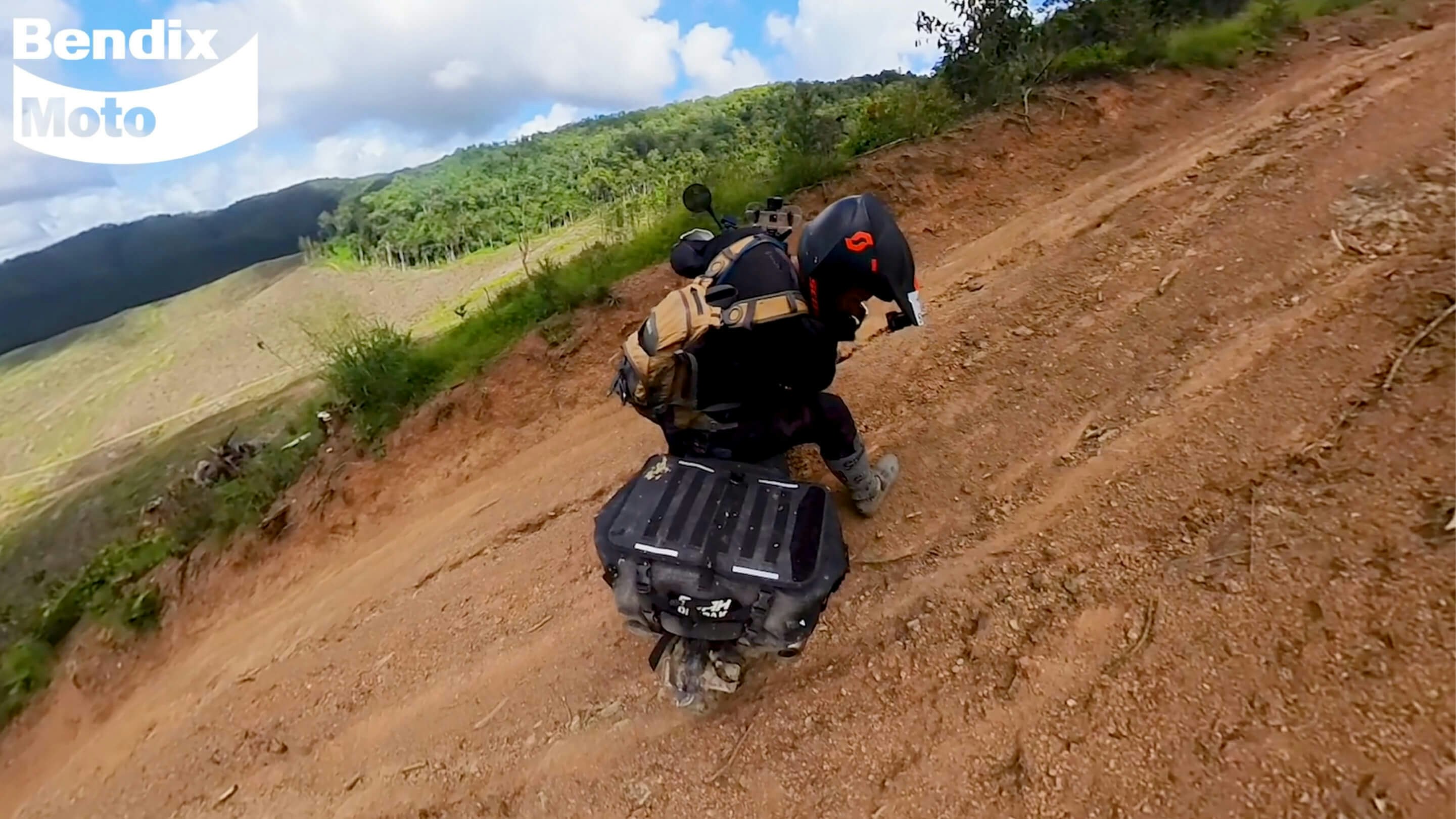
There’s nothing like the thrill of riding a trail or adventure bike off road, experiencing stunning bushland and seeing sights that only a few get to enjoy. Riding off-road also throws up different terrain and challenges, testing riders’ skills and making this environment even more rewarding for riders.
To help stay safer when out on the trails, bikers should consider participating in rider training, particularly those who are less experienced or only occasional riders. It takes many hours of practice to perfect riding skills – when riding in the bush having mastery of a technique or skill can be the different between a great day out, or injury and mechanical mishap.
As a leading manufacturer of quality brake pads for the motorcycle industry, Bendix has partnered with the rider training team at motoDNA to develop a series of tutorials to share the knowledge of motoDNA’s experienced trainers. In the last installment we gave tips to riders on how to best negotiate steep hills.
But what happens if a rider gets near to the top of the hill and decides that the terrain is too difficult, or the bike stalls and you lose momentum? Turning around and backtracking on a hill is a necessary skill for riders to develop, because it will get them out of potentially dicey situations, while also giving them the confidence to attempt steep hill climbs in the first place.
Here are some simple tips from motoDNA in how to execute a turn on a steep hill.
Relax and take your time
So, if forward momentum up a hill has come to a standstill – the surface might be too slippery, the gradient too large or the rider may have stalled the bike – what should they do next? The safest option is to turn around and find an alternative route or have another go from the bottom.
The first thing to remember is that there’s no rush to execute the manoeuvre – riders should take their time. If you fall over the high side of the bike, it will hurt! And the rider will probably end up with a 200 plus kg adventure bike on top of them; it’s not worth the risk to save a minute or two.

Understanding grip
The next thing consideration is grip. Weight equals grip. With the bike pointing up the hill, most of the grip is on the rear tyre.
Holding the bike on the slope before attempting a turn can present a tricky situation – if you use the front brake on its own, the bike will slide. And engaging the rear brake can be difficult because feet are needed on the ground for stability. The solution is to use the clutch with the engine off to better control the grip.

Use the clutch
If the engine is still running, the rider should stall it and remain in gear. The rider can also sit as this will save energy and provide an opportunity to evaluate the situation; added weight over the rear tyre will also provide better grip. Now with the engine off, the rider should begin slipping the clutch to allow the bike to roll back. Slow, small movements are what’s required.
Riders should also regularly look down and check their footing, so they don’t go over the high side of the bike. Also, they should lean the bike into the hill putting greater weight on that foot.

Then once sideways on the hill, they should move the steering from side to side to ‘walk’ the front tyre and point it back towards the bottom of the hill – head should be kept up to provide good balance and help pick a line.

Now that more weight is transferred to the front of the bike, the rider can start using the front brake as well. Both tyres will likely be sliding, so riders should modulate that front brake pressure together with the clutch friction point for the rear.

Once again, it’s important to stress that riders should take their time – there’s no rush, and they’ll be less fatigued and safer by taking things slowly.
Of course, practice makes perfect, so the more time that’s spent on the trails honing these techniques, the sharper a rider will become. To gain more insights into proper riding techniques, both on and off road, it’s recommended that riders consider participating in programs run by reputable providers such as motoDNA.
motoDNA offer both traditional rider training courses, through to programs overseen through the innovative Digital Academy, which is a data-driven platform that lets riders practice their riding skills at their own pace, in their own time and on their favourite roads and trails.
Before hitting these trails, riders should ensure their machines are in good mechanical working order, especially prior to use in demanding conditions and terrain. The braking system is one area that should be checked regularly and even prior to each adventure weekend.
Bendix offer a wide range of motorcycle brake pad options under its Bendix Moto product lines, including its Ultimate+ and Street Road Track pads, ensuring bikers can ride with confidence.
Ride safely — Find the right brakes for your bike

 Australia
Australia
 New Zealand
New Zealand
